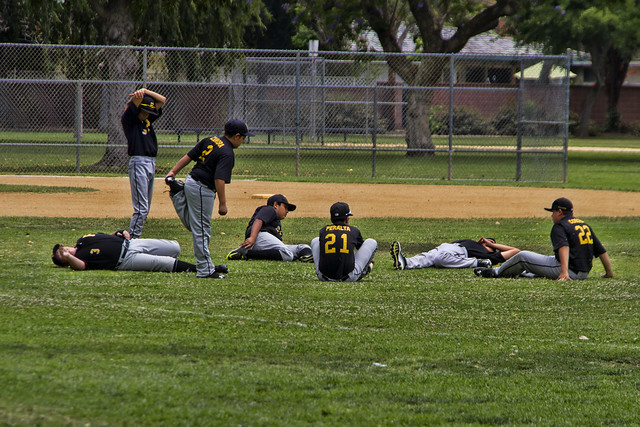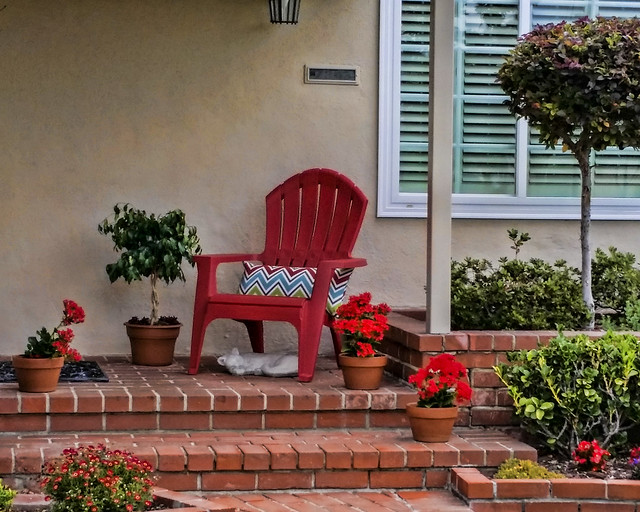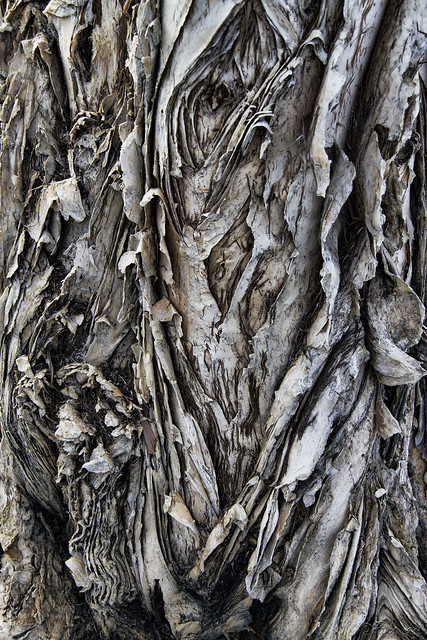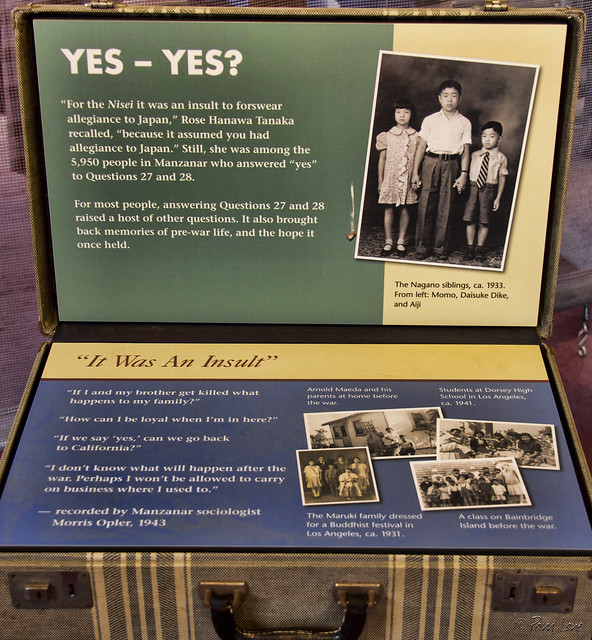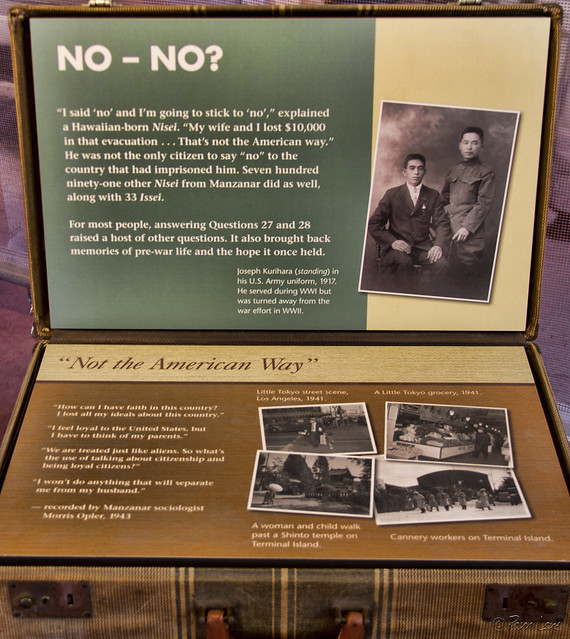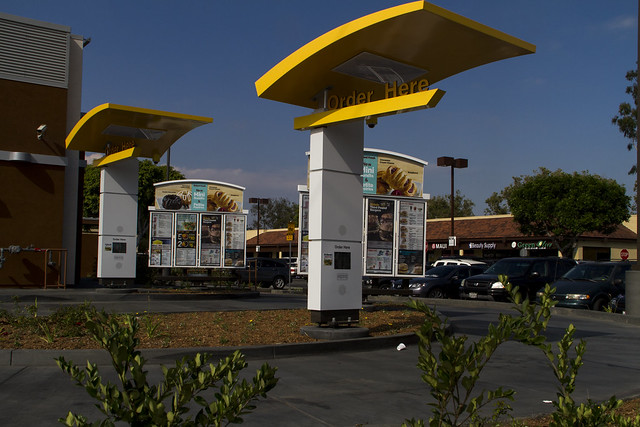
Before I head back home, one last post from Manzanar. Here is an excerpt from one of the displays:
"Manzanar changed substantially between the day it opened in March 1942 and the day it closed in November 1945. Internees transformed the landscape with ponds and gardens. Families welcomed babies and mourned deaths. Schools educated students, internal security helped prevent crime, and the fire department extinguished fires. In its first anniversary issue, the Manzanar Free Press published an anonymous poem about the complexity of life at Manzanar:
"Out of smiles and curses, of tears and cries, forlorn;
Mixed with broken laughter, forced because they must...
Out on the desert's bosom—a new town is born."

The film and the displays at the visitor center show this new town. There are old photos showing how the internees created beauty out of nothing. There were gardens everywhere, both for food and for beauty. (The internees grew much of their own food.) But almost nothing of the original buildings and gardens is left—the only thing still standing (that is, not reconstructed) is the cemetery.
Also from the displays:
"The Japanese Kanji characters read 'Soul Consoling Tower.' Master stonemason Ryozo Kado, a Catholic, and Buddhist minister Shinjo Nagatomi designed this iconic monument as a permanent tribute to Manzanar's dead. Kado built the obelisk with the assistance of Block 9 residents and a young Buddhists' group, funded by 15-cent donations from each family in camp."
There are only six graves left in the cemetery, because most families of the deceased, after they got resettled, came back and moved the remains of their loved ones for reburial elsewhere.

 I was outside and it felt so humid and tropical. Then came the rain. As I watched, the sun (which had been hidden behind the rain clouds) became more visible, trying to peek through...while it was still raining.
I was outside and it felt so humid and tropical. Then came the rain. As I watched, the sun (which had been hidden behind the rain clouds) became more visible, trying to peek through...while it was still raining.









